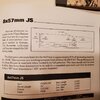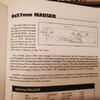Palladan44
Member
- Joined
- Nov 7, 2020
- Messages
- 1,904
For example, I see posted data on another forum showing 15.2 grains of modern 2400 and a 158 grain Speer JSP got 1263 fps from a 4" Smith (in another source 15.0 grains of modern 2400 and a 158 gr cast exceeded 1500 fps from an 8-3/8 Smith, so 2400 still seems to produce as much velocity as the old days)..
Interesting thought. I used up some decades old Hercules 2400. A friend thinks its from the 90s but I believe its from the 70s or older. White metal can.
Powder still was fine though. I also have my trustee 8lb jug of Alliant 2400 which i compared it to. Let me just say that there was enough difference between them that you could have convinced me they were different powders altogether. The old stuff acted more like WW-296 without the flash. My new stuff is milder, and can be downloaded about 10% more. The old stuff left the yellow grains left behind no matter what loading, but the new stuff actually burns clean at the higher range (ex. 20 grains in 44 mag, 240gr. LSWC) But all in all, the older 2400 was hotter, enough to tell just by the senses. I like the new 2400 better for my purposes. NOW was the old hercules 2400 that much different than the new stuff, or did the old powder change over time, or is this just the nature of batch to batch powders changing. Some of each perhaps?







